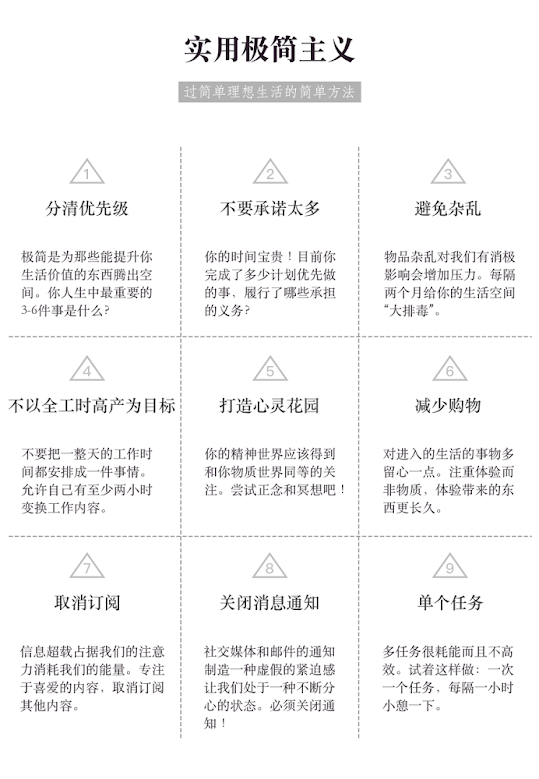上海、新加坡、香港是亚洲三个重要的港口城市,在城市核心竞争力,经济发展特点,东西方文化交融等方面具有诸多类似性与竞争点。上海发展起步较晚,但潜力最大,上升最快;新加坡仍维持着较大的吸引力且存在继续上升空间;而香港的城市吸引力正在衰减。
新加坡经济总量最大,上海增速最快,香港增长乏力
上海是中国的经济中心,也是航运中心和金融中心。商贸流通、金融、信息、制造是上海最重要的产业。近年来上海还大力推动新兴产业发展。2016年,新能源、新能源汽车、医疗器械等领域都实现了超两位数的发展,成为上海经济新的增长点。上海还拥有广阔的经济腹地,以金融等高层次服务业与新兴工业为主导,是长三角城市群的“心脏”城市;而南京的石化、电子业,杭州的轻纺、旅游业,宁波的石化,舟山的海水捕捞和养殖都具有相当规模,长三角城市间通过产业优势互补、相互投资、设立共建工业园区、产业链地区间转移等形式协作,2016年长三角核心区16城GDP总值达12.3万亿,增速7.8%,区域经济占全国总比重达16.5%。
新加坡前总理李光耀于1963年提出了“绿化新加坡,建设花园城市”的构想,至今新加坡建有公园340余个,绿化面积达国土面积45%,绿化覆盖率达80%以上,人居环境和旅游环境大大改善,旅游业迎来高速发展。1999年新加坡制定了“文艺复兴城市”计划,致力于将新加坡打造为“具备艺术特长的全球城市”,让艺术和文化产业成为新加坡新的城市名片。目前新加坡是东南亚国家中唯一的发达国家,经济的主要支柱为国际贸易, 加工业与旅游业等。但作为高度外向型经济体,全球经济增速放缓给新加坡经济带来较多波动因素,近两年GDP增长一直维持在2.0%上下。
香港一直将自己定位为“亚洲的国际金融中心”。贸易及物流业,金融服务业,专业及工商业支援服务业与旅游业并列为香港四大支柱行业。近来外贸和金融业受内地和美国两个主要合作伙伴经济增速放缓, “占中”等问题影响,服务输出下降。旅游业对内地游客依赖较高,受政治因素影响在持续调整中,2016年香港GDP增速1.9%,出现连续三年的下降。
三地政策均重视吸引外资,香港投资额最高但存在不稳定因素
上海是中国的经济、交通、科技、工业、金融、会展和航运中心,也是大陆首个自贸区“中国(上海)自由贸易试验区”所在地,因此在政策方面有不少特殊之处,如区内税收优惠, 对外商投资服务业放开, 对于进入自贸区的境外商品货物实行简便的通关手续, 人民币自由兑换, 区内金融机构将实现存贷款利率市场化, 人民币跨境结算放开等等。2016年上海市合同利用外资达509.8亿美元,实到外资185.1亿美元,实现了快速增长。
新加坡政府采取了多项优惠政策来吸引外资,如对内外资企业实行同等的税收政策, 对新技术产业公司提供5-15年的免税期,对符合条件的跨国公司来新加坡设立总部,只征收10%的企业所得税, 新加坡居民海外收入收回新加坡投资或管理时免税等。统计表明,2015年“一带一路”64个国家对华投资总额中,有80%来自新加坡,中国对新投资则占“一带一路”国家对新投资的33.5%。新加坡在“一带一路”中有着重要地位,将与中国实现更多互惠。2016年新加坡外资流入总额约500亿美元,在全球经济体中排名第五。
香港最大的问题是近年来社会“泛政治化”现象严重,阻碍了经济发展。诸如“占中”等不利香港与中国大陆关系的群体事件多次发生。矛盾激化下,其原先作为“中国门户”的地位不保,与大陆的多项互利政策推行受阻。金融中心的城市定位也受到了上海甚至同在珠江三角洲城市群的深圳挑战,经济总量亦即将被深圳赶超。梁振英曾表示:香港社会近年仍处于泛政治化,阻碍经济发展。但香港在吸引外资方面没有任何利润返还和股权上限的限制,注册公司手续简便,因此对外资仍保有很大吸引力,2016年外资流入总额达920亿美元,在全球经济体中排名第四。
尽管存在不稳定因素,香港仍是三地中外资吸入最高的城市,而在未来政策优势和红利角度看,新加坡上升空间还很大。
新加坡生活质量与收入水平都最高,更吸引高端人才
三地卫生医疗体系对比,新加坡的医保政策最高效
在医保政策方面,中国和新加坡实行类似的医保体系。新加坡实行保健储蓄计划(Medisave),健保双全计划(Medishield),保健基金计划(Medifund)三者结合的医疗保障系统。上海按照中国统一的城镇居民医疗保险计划,由个人、企业、政府共同承担保费。相比较而言,新加坡的医保政策有更重视强制性个人储蓄,普通职员和雇主平摊工资6%-8%的医保费用,而上海按照个人支付2.0%,单位支付9.5%的比例收取医保费用,但与此对应,新加坡医保体系中也划入更高比例进入个人账户。
香港没有政府设立的医疗保险,只有商业医疗保险。政府主要通过公立医疗机构的服务,实现对就诊市民的高福利和低收费,市民去公立医疗机构看病只需要支付很少的医疗费用。但这个政策也带来了公立医院资源不足效率低下,市民不得及时就诊的情况。政府负担日益变重,对医疗资源也造成了很大浪费。
综合来看,香港的医疗福利最高但造成了很大社会负担,带来了医疗服务质量下降等问题;上海医保政策给个人的压力不大,但对企业会造成了不小压力;总体而言,新加坡的医保体系虽然对个人投资要求更高,但最为公平高效。
新加坡收入与消费都最高,香港生活负担最大
在经济学人智库2016年对全球城市生活成本的调查中,新加坡排名首位,香港第三,上海第十一。根据万联移民数据,在每花费100万美元能够在城市中心区购买多少平米房屋的排名中,香港在三个城市中最低,为20㎡,意味着房价最高,排在全球城市第二;新加坡和上海分列第七和第八,为42㎡和48㎡。在房价涨幅方面,上海中心区房价在三地中涨幅最高,达到14%。
三个城市的物价和房价都处在全球靠前水平,居民的生活成本均较高,低收入者生活负担较大。2016年,香港思汇政策研究所发表的研究报告显示:香港人对整体生活的满意度在这三个城市中最低,并有42%的被访者认为如果能自由选择,就会离港迁居,而新加坡和上海这一比例只有17%和20%。
新加坡最吸引外籍劳工,香港引进政策成效一般,上海吸引外劳正在起步阶段
新加坡具有高度亲和的人才引进与外劳政策,其中包括给予外籍工作人员赋税优惠与亲属安置的便利,使用“个人化就业许可证”给失业外籍人员在新加坡继续找工作提供6个月缓冲期,留学生自愿留新工作三年即可获政府提供全额学费,对外籍劳工开放移民政策等。新加坡依靠系列人才引进政策,外籍劳工数量逐年增长,仅2008年就增长14.9万人,达到峰值。
尽管持有“优才计划”,“输入内地人才计划”等人才引进措施,香港引进外籍劳工的成果相较于新加坡乏善可陈。2012年数据显示香港外籍劳动人口8.7万人,仅占劳动总人口的2.3%,而同年新加坡共有88.5万低技术外劳,占总劳动人口的28.0%。
在高端人才引入层面,新加坡会优先从速引入其经济发展急需的通信, 电子及其他领域的高技术人才和金融行业人才,香港优才计划则主要通过“计分制”筛选人才,对专业领域未做明确规定或加分项,但更偏向年轻的、有国际教育和工作背景或某个领域成就突出的成功人士。
与香港, 新加坡相比,上海早期对于外国劳工需求不够迫切,其人才引进政策更偏重吸引中国其他地区劳动力,至2014年末,上海外来人口占到全市常住人口比例的41.0%。但有分析显示,上海近年来老龄化现象开始凸显,劳动力压力正在增大,因而也开始加强对海外人才的引进措施,如扩大上海市海外人才居住证件申办范围,降低永久居留证申办门槛等,上海外籍人口开始逐年递增。
总体来看,三地同作为亚洲重要城市,相似处很多,但各自特点也非常突出:新加坡通过对外资更有亲和力的税收政策,对房价的严格控制等继续保持发展活力,同时拥有教育、医疗、环境等加分项(见上表),薪酬方面更接近国际先进水准,对行业顶尖人才具有最大的吸引力;上海因起步最晚,人均生活水平和另两城市相比还有差距,依靠其广阔腹地和长三角城市群协作优势有巨大上升潜力,同时对各层次人才有着相当包容性的需求,是吸引力的首要来源,但其生活成本也在快速走高;香港虽然也有低税率和高生活水平,但政治不稳定、房价飙高、医疗制度不够高效等因素给经济发展造成障碍,吸引力有所下降,在三地中排名靠后。












